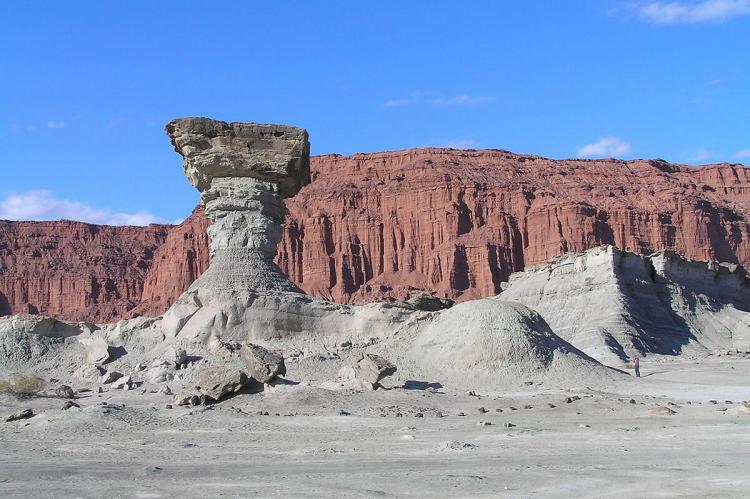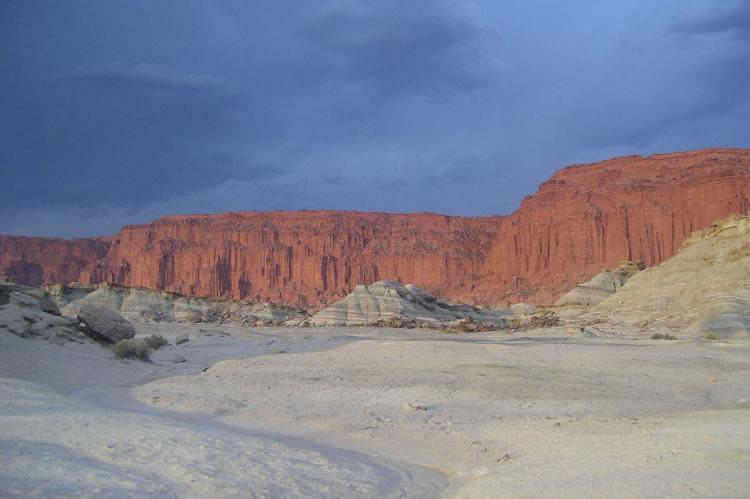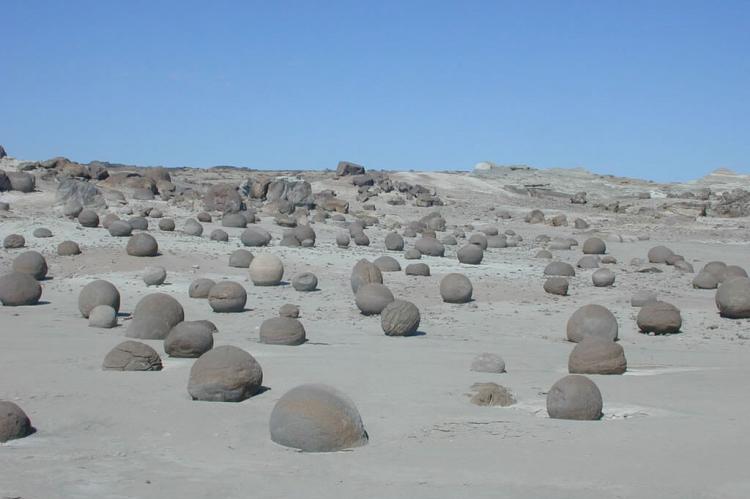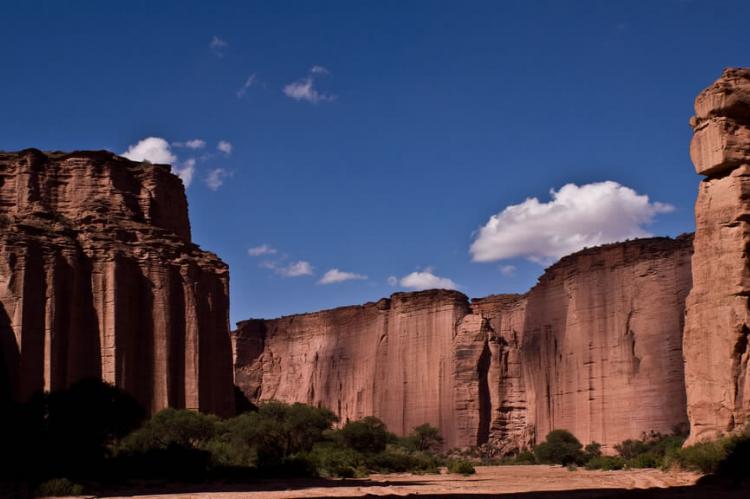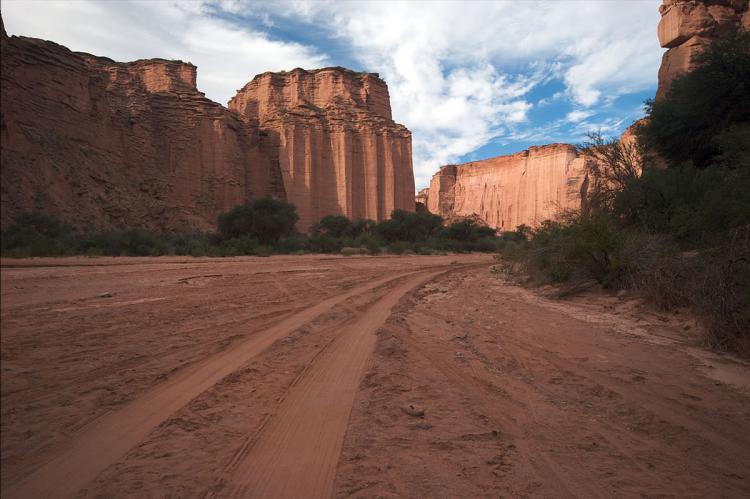Ischigualasto and Talampaya Natural Parks: Geological Treasures of Argentina
Ischigualasto and Talampaya Natural Parks in Argentina's Cuyo region are UNESCO World Heritage Sites recognized for their geological and paleontological significance. They offer a glimpse into the distant worlds of the Triassic Period and emerge as awe-inspiring monuments to Earth's past.
Ischigualasto and Talampaya Natural Parks: Geological Treasures of Argentina
Nestled amidst the rugged and arid landscapes of the Cuyo region in central Argentina, the Ischigualasto and Talampaya Natural Parks emerge as awe-inspiring monuments to the Earth's ancient past, offering a glimpse into the distant worlds of the Triassic Period. These two adjoining protected areas, spanning an expansive 275,369 hectares (680,450 acres) of pristine wilderness, form a UNESCO World Heritage Site recognized and celebrated for their profound geological and paleontological significance.
Ischigualasto Provincial Park: Valley of the Moon
Ischigualasto Provincial Park, affectionately known as the "Valle de la Luna" or "Valley of the Moon," encompasses 60,369 hectares (149,175 acres) of otherworldly landscapes and stark desert vistas. Located on the western border of the Central Sierras, this protected area is renowned for its unique geological formations and exceptional fossil deposits dating back over 250 million years.
The climate within Ischigualasto is harsh and arid, characterized by extreme temperature variations and minimal rainfall, with most precipitation occurring during the summer months. Persistent southern winds, often accompanied by the mighty Zonda wind, sculpt the landscape and contribute to the region's distinctive features.
Within the confines of Ischigualasto Provincial Park lies the sedimentary Ischigualasto-Villa Union Triassic Basin, a geological treasure trove that preserves a comprehensive record of life during the Triassic Period. This Basin, consisting of six distinct sedimentary formations, provides invaluable insights into the evolution of vertebrates and the emergence of dinosaurs and mammals over millions of years.
Talampaya National Park: A Palaeontological Oasis
Talampaya National Park, covering an expansive 215,000 hectares (531,275 acres), is situated at an altitude of 1,500 meters (4,920 feet) above sea level. Nestled within a basin between the Cerro Los Colorados and the Sierra de Sañagasta, this park is renowned for its breathtaking landscapes and significant archaeological and palaeontological sites.
Erosion, both by water and wind, has sculpted the dramatic sandstone cliffs and rock formations that define Talampaya National Park's landscape. High temperatures during the day, chilly nights, torrential summer rains, and strong spring winds create an environment of extremes that has shaped the region's unique geology.
Scientific Significance and Biodiversity
The Ischigualasto and Talampaya Natural Parks are scientific treasures of global importance. They offer a comprehensive and detailed record of life during the Triassic Period. Fossilized remains of ancestral animals and plants provide crucial insights into vertebrate evolution and ancient ecosystems, contributing to our understanding of paleontology and evolutionary biology.
The parks' exceptional landscapes, characterized by towering cliffs and multicolored sediments, are home to various rare and endemic species of flora and fauna. Sparse desert vegetation, comprising xeric shrubs, cacti, and interspersed trees, thrives in this harsh environment, adding to the region's ecological richness.
Influence of the Argentine Monte
The Argentine Monte ecoregion, characterized by its warm scrub desert environment along the Eastern Andean foothills, plays a crucial role in shaping the landscape and biodiversity of the Ischigualasto and Talampaya Natural Parks. As part of this ecoregion, the parks experience similar climatic and ecological conditions, with arid climates, sparse vegetation, and unique adaptations among flora and fauna to survive in harsh desert environments.
Within the Ischigualasto and Talampaya Natural Parks, the Argentine Monte ecoregion manifests in the form of xeric shrubs, cacti, and scattered trees, which are well-adapted to the arid conditions prevalent in the region. The vegetation within this ecoregion not only adds to the scenic beauty of the parks but also provides habitat and sustenance for various wildlife, including endemic and rare species.
Moreover, the geological formations and landscapes found within the parks are influenced by the erosive forces characteristic of the Argentine Monte ecoregion. The sculpted sandstone cliffs, canyons, and valleys are testaments to the erosional processes driven by water and wind over millions of years, shaping the region's rugged terrain.
Conclusion
In conclusion, the Ischigualasto and Talampaya Natural Parks are testaments to the Earth's ancient history and ongoing evolution. These geological wonders, with their rich fossil record and unique landscapes, offer a glimpse into the distant past and provide invaluable insights into the origins of life on our planet. As stewards of these extraordinary sites, it is the responsibility of society to preserve and protect them for future generations to study, explore, and appreciate.
